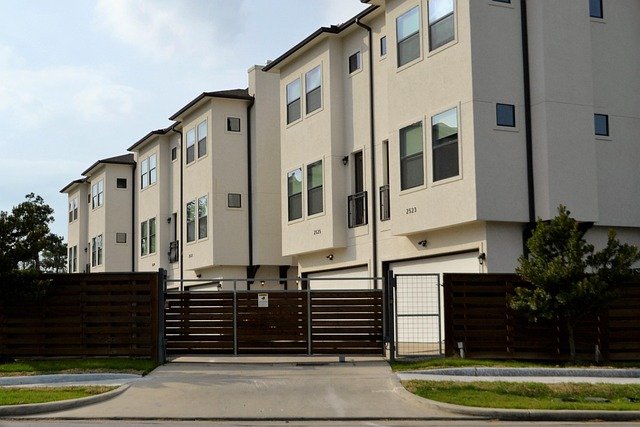Micro-Apartments: Redefining Urban Living Spaces
Imagine living in a 200-square-foot apartment that transforms seamlessly from bedroom to office to living room with just a few adjustments. This isn't a futuristic concept, but a growing trend in major cities worldwide. Micro-apartments, also known as micro-units or nano flats, are reshaping urban living and challenging traditional notions of space and comfort. As housing costs soar and city populations boom, these compact dwellings are becoming an increasingly attractive option for young professionals, students, and even small families seeking affordable housing in prime locations.

The rise of micro-apartments is closely tied to changing demographics and lifestyle preferences. Millennials and Gen Z, who often prioritize experiences over possessions, are more willing to trade space for location. Additionally, the increasing number of single-person households and the trend towards later marriages have created a demand for smaller, more affordable urban housing options.
Design Innovations in Micro-Spaces
At the heart of the micro-apartment revolution is innovative design. Architects and interior designers are pushing the boundaries of spatial efficiency, creating living spaces that maximize functionality without sacrificing comfort. Multi-purpose furniture is key: beds that fold into walls, revealing office spaces or dining areas; kitchens that can be concealed behind sleek panels; and storage solutions integrated into every nook and cranny.
Smart home technology plays a crucial role in enhancing the livability of these small spaces. Voice-activated systems can control lighting, temperature, and even transform the layout of the apartment. Some micro-units feature movable walls that can reconfigure the space based on the time of day or the resident’s needs.
High ceilings and large windows are common features in well-designed micro-apartments, creating a sense of openness and bringing in natural light. Many buildings also offer shared amenities like rooftop gardens, co-working spaces, and communal kitchens, extending the living space beyond the individual unit.
The Economics of Micro-Living
From a real estate investment perspective, micro-apartments present an intriguing opportunity. While the per-square-foot cost of these units is often higher than traditional apartments, they typically offer better overall returns for developers and investors. The smaller size allows for more units per building, potentially increasing rental income.
For renters, micro-apartments can provide access to desirable neighborhoods at a fraction of the cost of larger units. In cities like San Francisco or London, where average rents for one-bedroom apartments can exceed $3,000 per month, micro-units might be available for $1,500 to $2,000, making urban living more accessible to a broader demographic.
However, the economics of micro-apartments are not without challenges. Construction costs can be higher due to the need for custom-designed furniture and fixtures. Additionally, some cities have minimum size requirements for apartments, which can limit the development of micro-units.
Impact on Urban Planning and Development
The rise of micro-apartments is prompting cities to rethink their approach to urban planning and development. Zoning laws are being updated to allow for smaller unit sizes, and building codes are being adapted to ensure safety and livability in compact spaces.
Micro-apartments can play a significant role in addressing urban housing shortages. By increasing housing density without necessarily increasing building height, they offer a way to add more units to existing neighborhoods without drastically altering their character. This can be particularly valuable in historic districts or areas with strict height restrictions.
Moreover, micro-apartments align with sustainability goals. Smaller living spaces generally consume less energy and resources, both in construction and daily use. When located in walkable neighborhoods with good public transportation, they can contribute to reducing car dependency and overall carbon footprint.
Challenges and Criticisms
Despite their potential benefits, micro-apartments have faced criticism and challenges. Some argue that they contribute to the commodification of housing, prioritizing profit over quality of life. Critics worry that normalizing such small living spaces could lead to a lowering of housing standards overall.
There are also concerns about the long-term livability of micro-apartments. While they may be suitable for young, single professionals, they can be challenging for couples or those who work from home. The lack of storage space and the potential for feeling cramped over time are significant considerations.
Mental health experts have raised questions about the psychological impact of living in such small spaces, particularly in the wake of the COVID-19 pandemic, which highlighted the importance of home environments for well-being.
The Future of Micro-Living
As urban populations continue to grow and housing affordability remains a pressing issue, micro-apartments are likely to become an increasingly important part of the housing mix in major cities. However, their future success will depend on thoughtful design, integration with community amenities, and careful consideration of long-term livability.
Innovations in modular construction and prefabrication could make micro-apartments more cost-effective to build, potentially lowering rents further. Additionally, advancements in virtual and augmented reality technologies could enhance the perceived spaciousness of these units, offering new ways to experience and utilize compact living spaces.
The micro-apartment trend also raises broader questions about the future of urban living. As remote work becomes more common, will the demand for city center housing shift? Could micro-apartments evolve into a network of flexible, short-term living spaces for an increasingly mobile workforce?
As the real estate industry continues to grapple with these questions, one thing is clear: micro-apartments are more than just a passing trend. They represent a fundamental shift in how we think about urban living spaces, challenging us to reconsider our needs, priorities, and the very definition of home in the 21st-century city.





